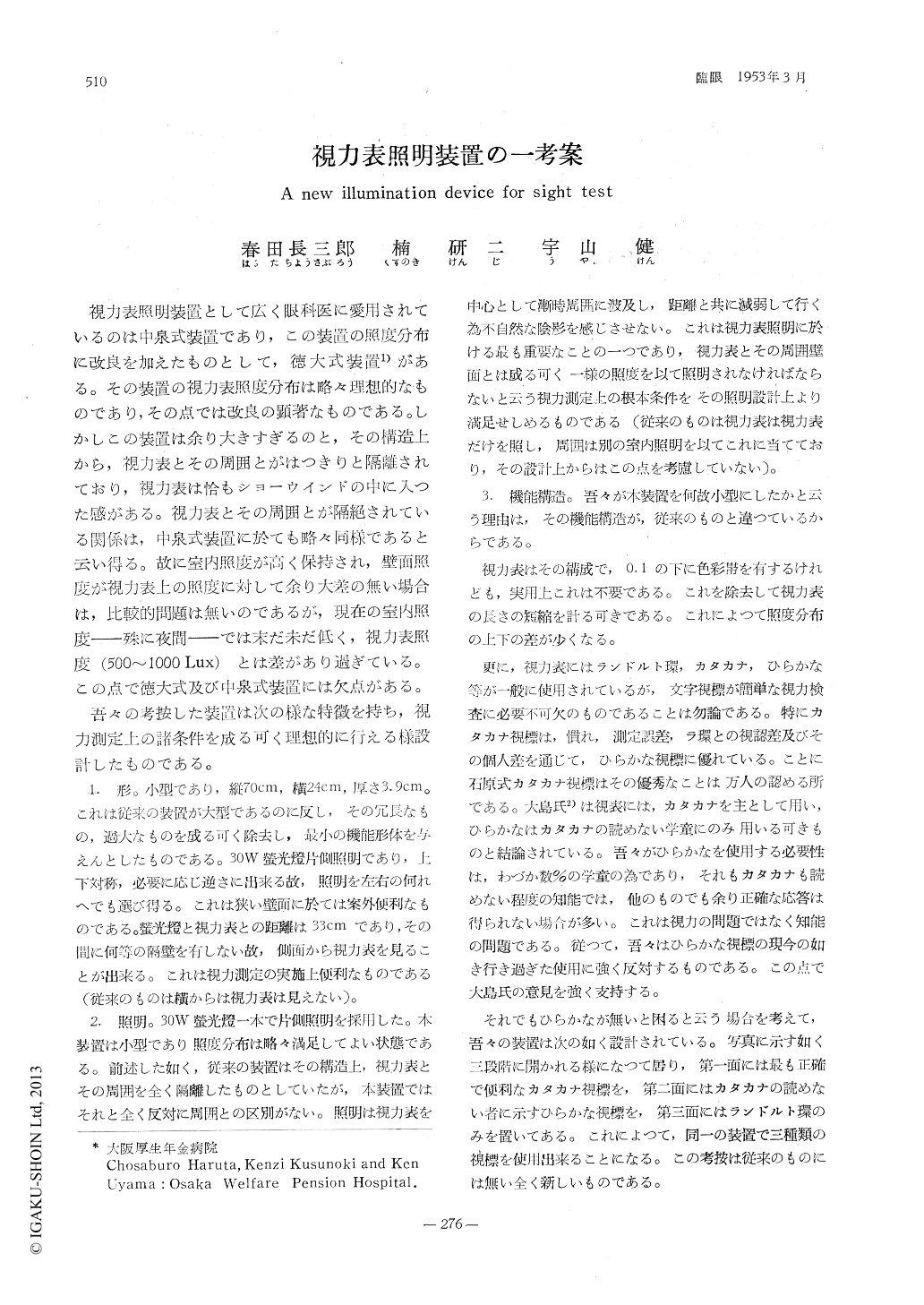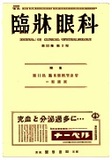Japanese
English
- 有料閲覧
- Abstract 文献概要
- 1ページ目 Look Inside
視力表照明装置として広く眼科医に愛用されているのは中泉式装置であり,この装置の照度分布に改良を加えたものとして,徳大式装置1)がある。その装置の視力表照度分布は略々理想的なものであり,その点では改良の顕著なものである。しかしこの装置は余り大きすぎるのと,その構造上から,視力表とその周囲とがはつきりと隔離されており,視力表は恰もシヨーウインドの中に入つた感がある。視力表とその周囲とが隔絶されている関係は,中泉式装置に於ても略々同様であると云い得る。故に室内照度が高く保持され,壁面照度が視力表上の照度に対して余り大差の無い場合は,比較的問題は無いのであるが,現在の室内照度——殊に夜間——では末だ未だ低く,視力表照度(500〜1000Lux)とは差があり過ぎている。この点で徳大式及び中泉式装置には欠点がある。
吾々の考按した装置は次の様な特微を持ち,視力測定上の諸条件を成る可く理想的に行える様設計したものである。
1) This device is a smaller one, provided with a three foled screens, which can be opened at an angle of 180° successively,thus permitting to show three different test charts, such as Katakana, Hirakana and Landolt types.
2) The Katakana types have a more accuracy in testing visual acuity. And the Hira-kana types are not so accurate, but most easily read by Japanese school children. So the most satisfactory result will be obtained by utilizing this device in the following manner: Katakana types on the first sheet for the commonest use, Landolt ring or Hirakana types on the second and third sheet when needed.

Copyright © 1958, Igaku-Shoin Ltd. All rights reserved.


